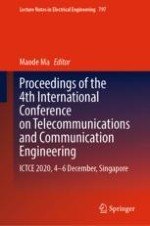The book is presents the papers presented at the 4th International Conference on Telecommunications and Communication Engineering (ICTCE 2020) held on 4 -6 December, in Singapore. It covers advanced research topics in the field of computer communication and networking organized into the topics of emerging technologies of wireless communication and networks, 5G wireless communication and networks, information and network security, internet of things and fog computing. These advanced research topics are taking the lead and representing the trend of the recent academic research in the field of computer communication and networking. It is expected that the collection and publication of the research papers with the advanced topics listed in this book will further promote high standard academic research in the field and make a significant contribution to the development of economics and human society.
